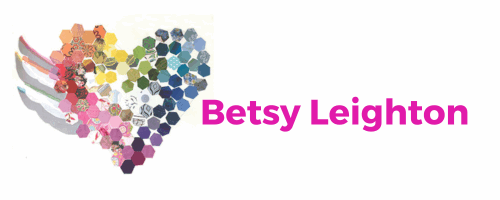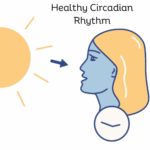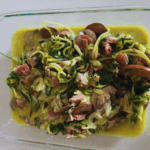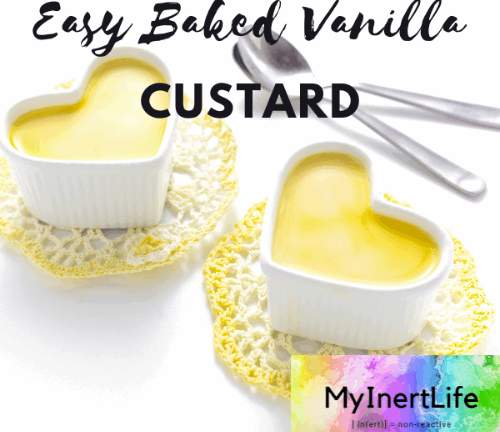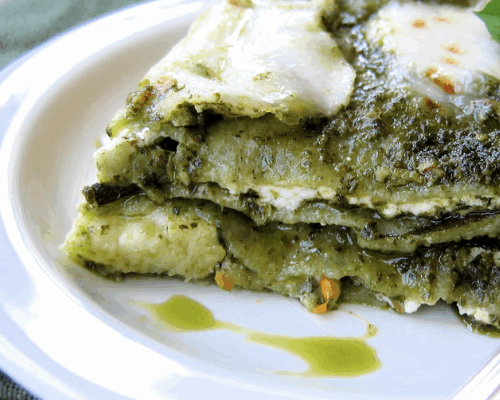This lower histamine baked custard recipe is a sweet creamy comfort food treat that satisfies a sweet tooth while being sugar-free. With just four ingredients this is a quick and easy dessert!
As an Amazon Associate, I earn from qualifying purchases.
Table of Contents
Ingredient notes
This custard is made with dairy cream, but if you can’t tolerate cream this recipe can be made with coconut milk, and it will be just as amazing. I like to use ChocZero Maple Syrup as the sweetener because it is free of erythritol and sugar alcohol. But you could just as easily substitute ChocZero’s maple pecan, chocolate, caramel, or even strawberry syrup to create a different flavor profile.
https://www.pinterest.com/pin/1054475700229812805/How to use a water bath
The preparation is easy, but if you are new to the water bath technique, here are a few pointers. Place your ramekins in a glass baking dish with sides at least two inches high. Fill the ramekins with the custard mixture after you have cooked it in the saucepan. Then carefully add water to the baking dish until it reaches the 1-inch level on the ramekins. You don’t want the ramekins to float. The water will help to insulate the custard in the ramekins so that it finishes cooking gently, and doesn’t curdle.
To freeze or not to freeze lower histamine baked custard?
Typically I freeze anything I make so that histamine does not build up as quickly in the food. Custard can be frozen, but there is a chance it will become grainy. So, I usually just refrigerate the custards and consume them quickly. The recipe calls for two servings, and if you are unlikely to finish them up in 2 days you might consider scaling the recipe back to one serving. It is easy to convert because the ratio is one egg per serving.
What is MCAS?
Mast Cell Activation Syndrome (MCAS) is a chronic condition that affects all organ systems. MCAS is serious and disabling and people with MCAS experience often significant and debilitating symptoms daily, including anaphylaxis, which can be fatal.
MCAS is often found in combination with other chronic conditions such as Ehlers-Danlos Syndrome (EDS) and Postural Orthostatic Tachycardia Syndrome (POTS).
Frequently healthcare providers do not know about MCAS, and the tests for MCAS are problematic because they are not uniformly reliable. MCAS can be difficult to manage. Treatments include blocking mast cell mediators with anti-histamines and mast cell stabilizers, as well as avoiding triggers.
Check out this post on how to manage MCAS.
Why this recipe for lower histamine baked custard?
This recipe is low in carbs, higher in fat, protein, and fiber, while still being lower in histamine and histamine-releasing foods, lower in oxalates, and free of nightshades, grains, and gluten. Eating a diet lower in carbs and inflammatory foods can help to control histamine intolerance. To learn more about the lower histamine Keto diet click here!
The bucket theory
The bucket theory offers a helpful analogy for understanding symptom reactions with MCAS.
Think of your body as an empty bucket that you want to keep from overflowing. Different foods and activities fill your histamine bucket at different speeds but they combine to form the total level of histamine in your body (how full your bucket is). A fuller bucket means you have more histamine symptoms. When you manage triggers, reduce exposure to known triggers, and take medications and supplements to reduce histamine, you can manage the level of your bucket.
Know your typical symptom progression
Knowing your symptom progression in a symptom flare is the key to developing your own rescue plan. In this post, I discuss how to determine your own symptom progression. Once you know what typically happens in your symptom progression you can design a rescue plan to address those symptoms.
Get my free ebook, symptom log, and meal plan!
Want a tool to easily keep track of your symptoms? Sign up for my newsletter and you will receive my free 50-page ebook of lower-histamine, grain-free, sugar-free, Keto recipes, my free symptom log, and a free two-week meal plan!
Here’s the recipe!
Ingredients
Equipment
Method
- Preheat the oven to 325 F. Place the heavy cream in a small saucepan and heat until it is starting to gently simmer and bubbles form around the edge of the pan.
- In the meantime, whisk together eggs, the sweetener, and the vanilla.
- Add the egg mixture to the heated cream, whisking until it is all combined. Remove the custard from the heat and divide it between two oven-proof 4-oz ramekins.
- Place the ramekins into an 8” x 8” glass baking pan and add boiling water around the edges until the water comes up the sides about 1”. Bake in the oven for about 60 minutes. The custard is ready when it jiggles together as one piece. It is not done if the outside and the inside of the custard are moving separately from each other when jiggled.
- Chill the ramekins for about one hour, and then consume immediately or within one day.
Nutrition
Tried this recipe?
Let us know how it was!Check out these circadian health tools!
I’m an affiliate with Bon Charge, a company that makes tools for circadian health, and you can receive 15% off your order with my coupon code BETSYL.
Bon Charge offers tools such as yellow and red-tone blue-blocking glasses, red light therapy devices, PEMF mats, infrared saunas, and EMF blocking products.
Sign up for the SSP!
If you are dealing with chronic illness, concussions, or trauma, the Safe and Sound Protocol (SSP) is a listening therapy based on Polyvagal Theory that helps heal nervous system dysregulation. Many people with MCAS and other chronic conditions have nervous system dysregulation stemming from infections, toxic exposures, concussions, and trauma. The SSP is an easy-to-use app where you listen to specially filtered music for 30 minutes each day for a 5-hour cycle. Studies show the SSP has a profound effect on mental health and chronic conditions
You can sign up for the SSP here!
Heal your mind!
While the SSP is a bottom-up or somatic therapy for healing the nervous system, the Sacred Self-Healing Method I offer is a top-down nervous system healing modality that focuses on cognition, attention, perception, and emotion, using the mind’s higher functions. The SSP and the Sacred Self-Healing Method complement each other and together produce lasting results.
I provide one-on-one in-person and remote chronic illness and caregiver coaching and Sacred Self-Healing Sessions based on the Sacred Self-Healing Method, a proven novel co-creative healing modality detailed in my Books.
Click here for more information.
Order my books!
Rocks and Roots chronicles my journey solo backpacking the Superior Hiking Trail and overcoming nervous system dysregulation, gut dysbiosis, and Mast Cell Activation Syndrome symptoms to hike 328 miles successfully.
The Sacred Self-Healing Method ebook is available here and in most ebook retailers!
The Sacred Self-Healing Workbook is available for purchase here!
Betsy’s first book, Sacred Self-Healing: Finding Peace Through Forgiveness, is available here
Companion Recordings
The companion audio recordings of chants, guided meditations, and sound healing demonstrations that accompany Sacred Self-Healing: Finding Peace Through Forgiveness are available to download for free here
What do you think?
I’d love to have your reply below!
Disclaimer
The preceding material does not constitute medical advice. This information is for information purposes only and is not intended to be a substitute for professional medical advice, diagnosis, cure or treatment. Always seek advice from your medical doctor.
